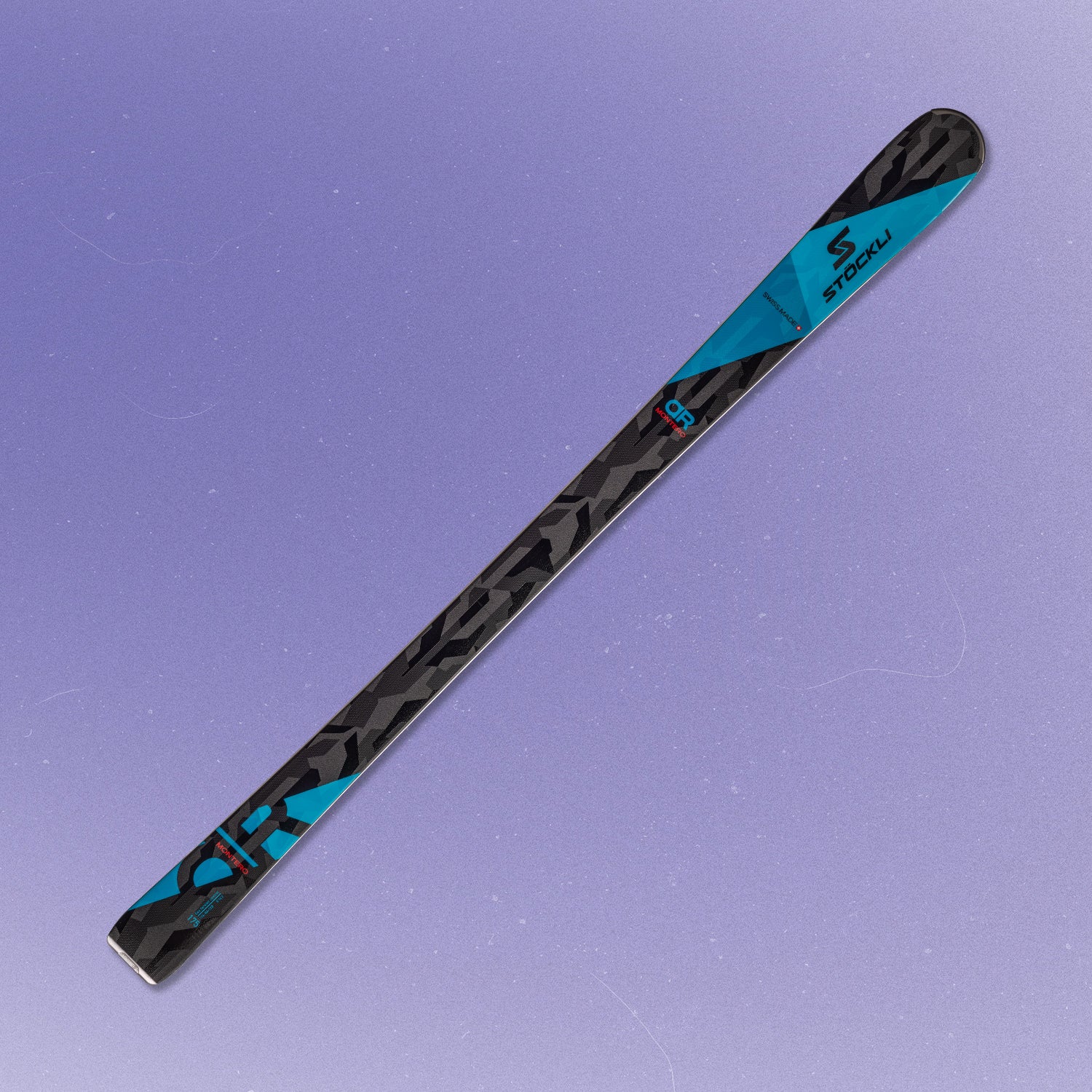This article was first published by .
The Scores (out of 10)
- Overall Score: 7.14/10
- Rank: #10
- Hard-Snow Integrity: 7.8
- Stability at Speed: 8
- Carving: 7.6
- Quickness: 5.2
- Responsiveness: 5.8
- Playfulness: 5.4
- Forgiveness: 5.2
- Crud Performance: 5.8
- Versatility: 6.4
The Specs
- Price: $1,349
- Lengths: 165, 170, 175, 180, 185
- Dimensions: 128-84-114
- Radius: 16.3 (178cm)
- Level: Advanced, Expert
In a Nutshell
- Pros: Hard Snow Integrity, Stability at Speed
- Cons: Quickness, Forgiveness
Montero translates to “hunter” in Spanish and the name felt appropriate for this Stöckli ski that liked to stalk and prey on fast and firm groomers. Stiff and conventionally built, the Stöckli Montero AR is a predictable and stable ride for a frontside resort cruiser. Its vibrancy comes out when you put more velocity into each turn, while its full wood core with two sheets of metal makes for stability and stiffness. “This ski likes to go fast,” said tester Chad Jacob, a race coach from New York. “It comes alive at speed and the stability is amazingly strong.”
A new ski on the market, the Montero AR replaces the acclaimed Stöckli Laser ski of the same waist width from years past. It is a cross between the Laser GS—a giant slalom-esque carving ski—and its all mountain-leaning sibling, Montero AX. It is still designed for on-piste skiing, but at 84mm underfoot and with more off-piste construction changes, it does have the ability to dash into the soft snow.
However, while the ski sports a little bit of tip and tail rocker to allow access to the chop and chunder on the side of the trail, this ski really just wants to cruise on hardpack. And with the Montero’s desire for speed, in addition to its genetic stiffness, testers all agreed that the ski is better suited to a more advanced skier that would be comfortable and confident at those high speeds. Not everyone can, or should, ski this beast.
Read more: See how the Montero AR stacked up against the rest of the competition
Testers also didn’t love the singular turn shape of the Montero, which restricts its versatility in terrain. And because of its burliness and flat camber, this ski lacks the energy and rebound that many of the other skis in the frontside category demonstrated. “This is a predictable and stable ski that will not let you down, but it lacks turn shape versatility and forgiveness,” said tester Dylan Hall. But many of the other testers, did agree that if you stayed on top of your turn and didn’t get lazy, this conventional-style ski could rip some serious arcs. “Rewards a strong forward move into the fall line with a kick,” said Jacob. “Only strong skiers need apply here.”
At nearly $1,400, the ski is the priciest of the top frontside skis of this season, so keep that in mind as you budget for this coming season. But its conventional construction will appeal to someone looking for a narrower all-mountain ski that can lay over medium-sized turns on steep terrain.
grew up ski racing, starting on the icy slopes of New England and finishing at the University of Colorado at Boulder. She now lives in Park City, Utah and works as the Director of Marketing & Communications at the U.S. Ski & Snowboard Team. She also freelance writes and consults in the skiing and Olympic industry. When she’s not traveling with the team, her home mountain is Deer Valley Resort, where she loves to arc turns on groomers, but also knows all of the secret spots for days-old powder. Harkins has been testing skis since 2016 and has been a SKI gear tester for three seasons.


